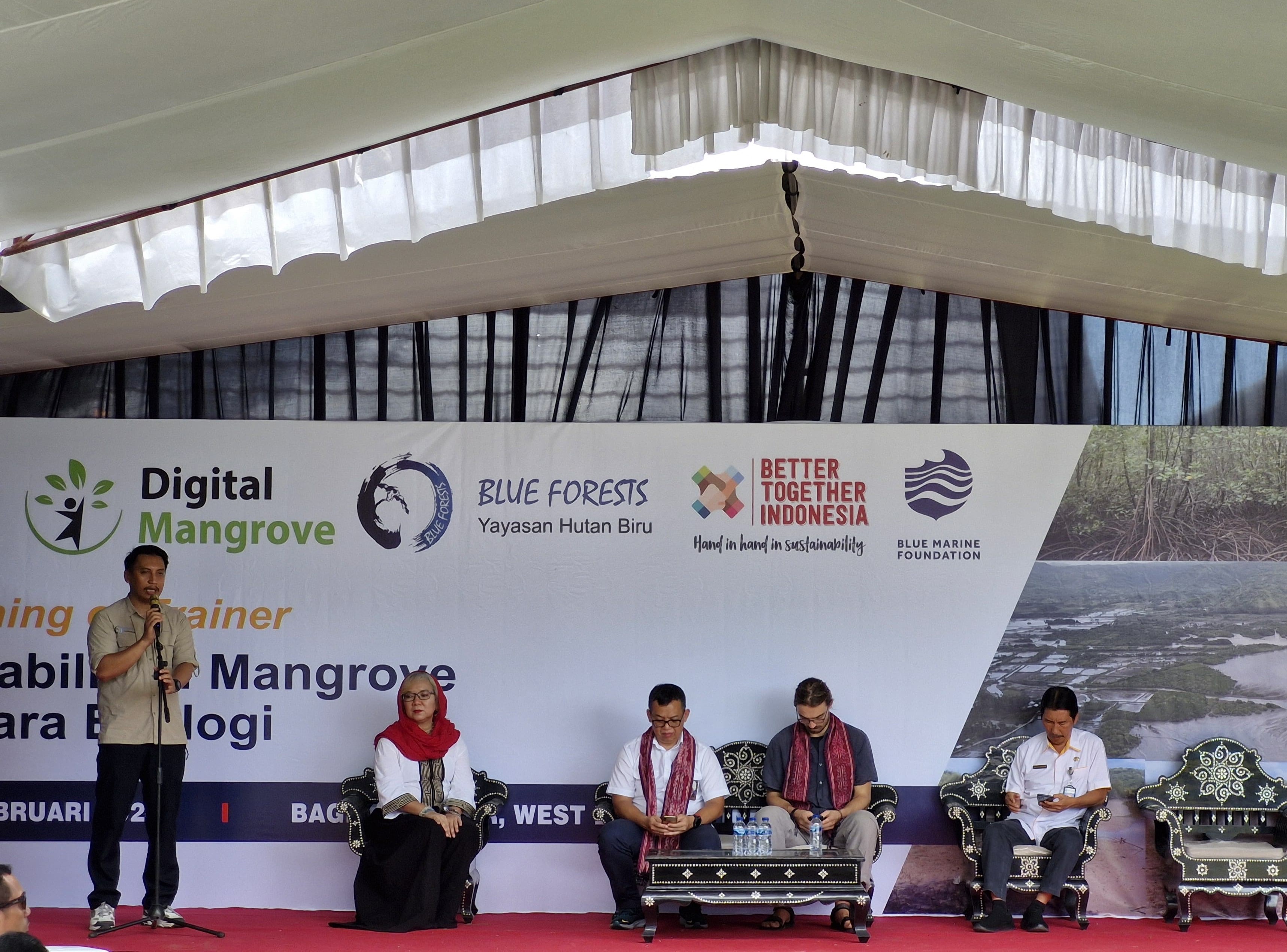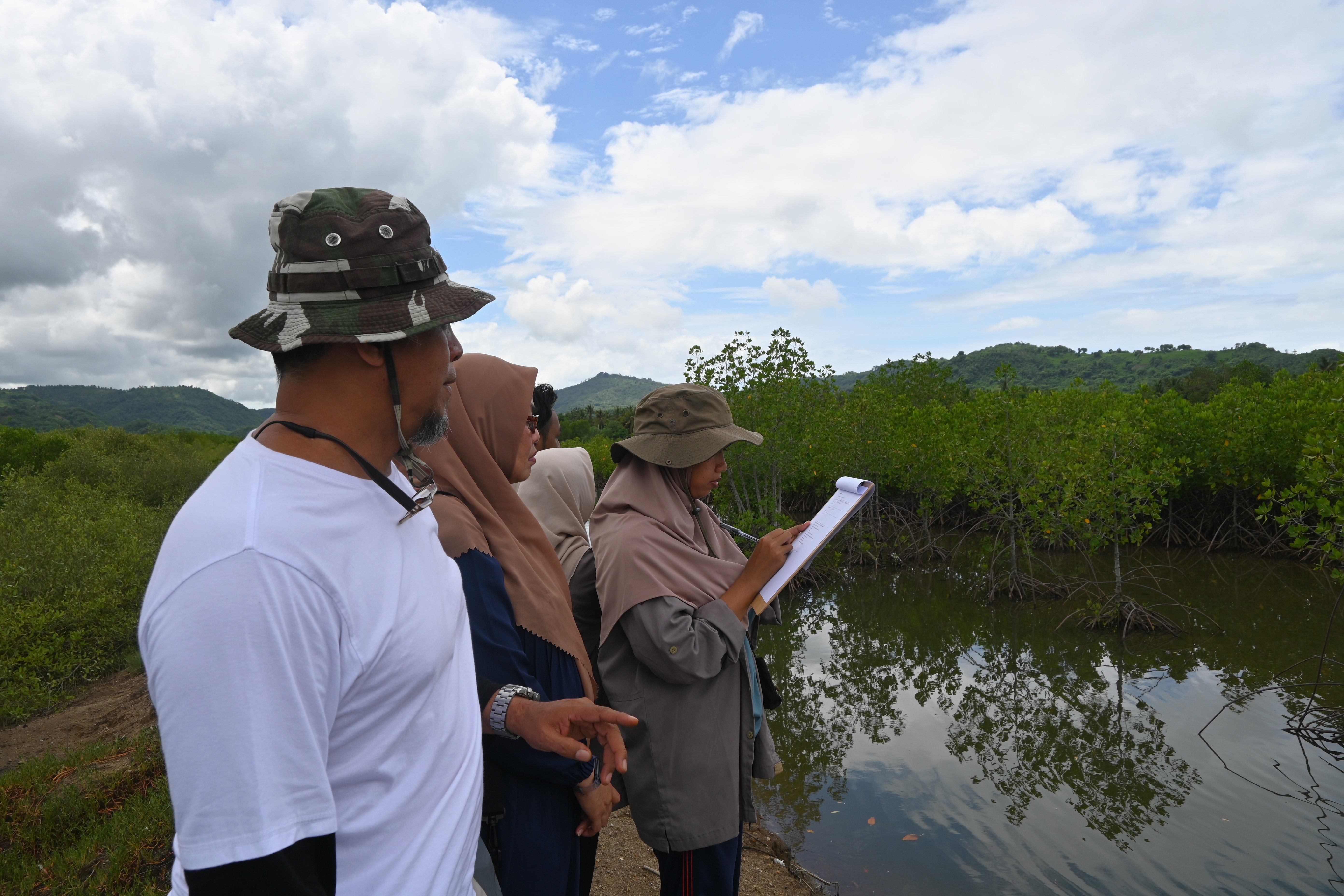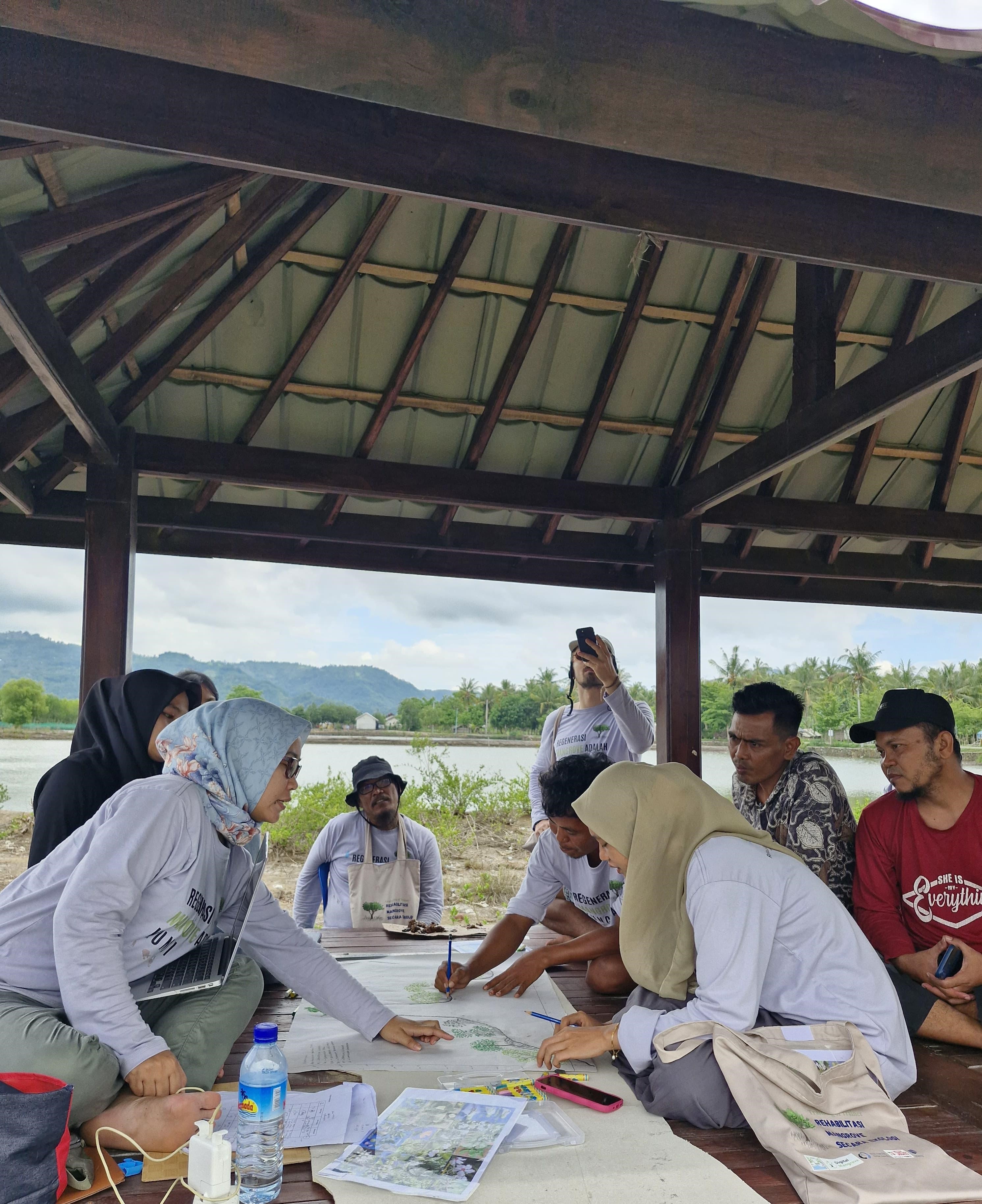This ToT (Training of Trainers) sought to build understanding and raise awareness about mangrove rehabilitation methods for stakeholders at the local and regional level in West Lombok. It is hoped that the knowledge gained during this training will become a valuable resource to inform planning and implementation of mangrove restoration in the region.
The training took place over the course of 4 days (February 7-10, 2024) in the Bagek Kembar Tourism Area, right alongside a stretch of both healthy and degraded mangrove forest. The event was well-attended, including many members of the local community, the local, regency and provincial government (the Ministry of Fisheries, the Ministry of Environment, the Ministry of Tourism, representatives of the Cendi Manik village government and representatives of Sekotong sub-district government), professors from the University of Mataram and Lombok Tourism Polytechnic, as well as NGO/volunteer groups (Yui Tools and Aik Berik).

During the training, participants were invited to learn about mangrove biodiversity, mangrove habitats, key features that impact the success of rehabilitation, the 6 steps of Ecological Mangrove Rehabilitation, and monitoring of mangrove rehabilitation.
The participants also had the chance to go down into the mangrove forests to conduct basic surveys in both reference forests and areas degraded by conversion to pond aquaculture. During this field session, the participants worked in groups to evaluate the ecohydrological conditions of the area and to identify possible obstacles to natural restoration. They then used these observations, along with the knowledge gained during the training, to outline a basic restoration plan.
 Participants conduct ecohydrological evaluation of the mangroves
Participants conduct ecohydrological evaluation of the mangroves
The participants involved showed incredible enthusiasm and spirit during the course of the 4 day training. One participant named Made stated, “This training gave me a new, deeper understanding of mangroves. Being able to go down to the field was so exciting and it made the class atmosphere feel more alive.”
 Participants design a mangrove restoration plan
Participants design a mangrove restoration plan
